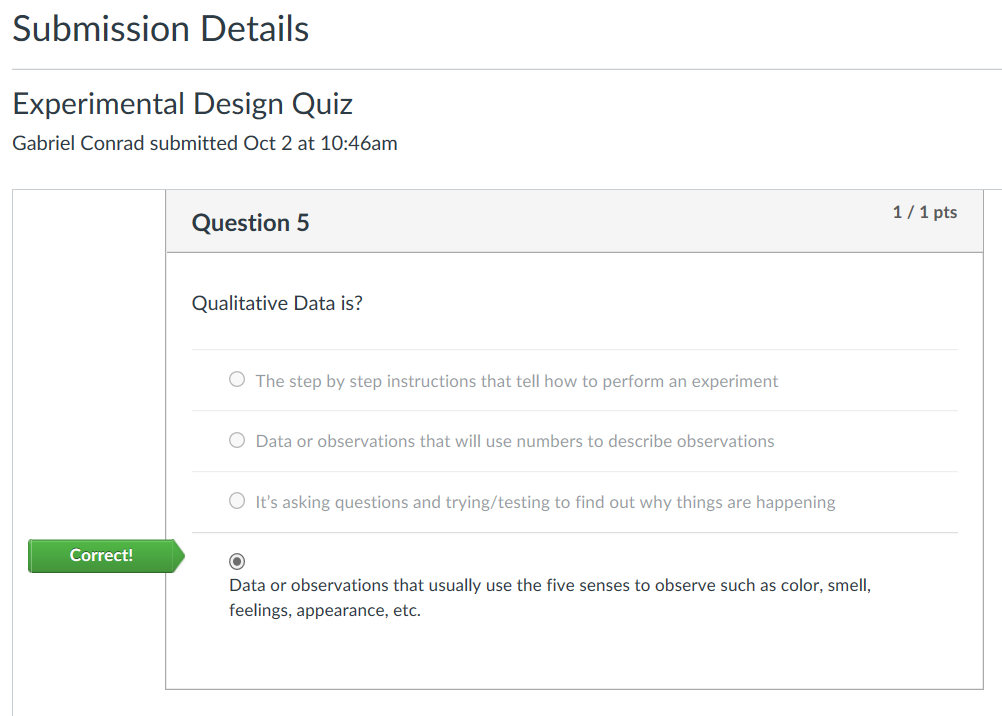Unit 4-5: Metatheoretical Considerations (I know, it’s a mouthful)
27 Qualitative vs. Quantitative Research [brief overview]
As this course is dedicated to understanding Social Scientific Research Methods, we’re going to focus on (wait for it…) social scientific research methods. Groundbreaking, right? But one of the ways that shakes out is that we’re going to be looking at “qualitative” and “quantitative” methods. Lucky for us, in the average SS communication research article, these are going to be communicated in the same section, and it’s going to be called METHOD.
What is Qualitative Research?
What is Quantitative Research?
Qualitative vs. Quantitative Research [brief overview]
Qualitative Research
Qualitative research is a non-numerical method used to gather data.
“Exploring theories (research questions, hypotheses) through language”
Characteristics of Qualitative Research
- It focuses on the individual and individual responses.
- It is subjective in nature.
- It avoids overgeneralization.
- It analyzes specific responses and experiences.
- Its purpose is to understand, describe, get close to those studied, and understand how participants see the world.
Quantitative Research
“Exploring theories (research questions, hypotheses) through numbers”
Characteristics of Quantitative Research
- It is a method of investigating observable phenomena through the use of statistics and other mathematical techniques. It was originally considered the most credible research method.
- It is objective and focuses on finding the overarching reality.
- Its purpose is to measure relationships among variables, test hypothesis, prediction/control/random sampling.
Quantitative Methods |
Qualitative Methods |
|
| Data | Numerical data. | Non-numerical data (e.g., text, audio, video). |
| Nature | Quant methods involve the collection and analysis of numerical data. | Qual methods focus on understanding concepts, experiences, or phenomena through non-numerical data. |
| Objective | To quantify variables and generalize results from a larger sample population. | To understand underlying reasons, opinions, and motivations. |
| Purpose | Used to test hypotheses or theories by examining relationships between variables. | Aim to explore and provide insights into people’s thoughts, feelings, and behaviors. |
| Data Collection | Common techniques include surveys, experiments, and strategies that necessitate statistical analysis. | Techniques include interviews, focus groups, observations, and content analysis (of what? popular press – newspaper, magazine- articles, interviews, conversations, social media, media broadcasts, etc.). |
| Analysis | Statistical analysis to identify patterns, correlations, and causations. | Thematic analysis to identify patterns and themes. Narrative analysis to explore how people make sense of their experiences through stories. |
| Outcome | Results are typically presented in the form of statistical summaries, graphs, and charts. | Results are often presented as themes, narratives, or case studies. |
| Strengths | Provides measurable and comparable data, useful for testing hypotheses and making predictions. | Provides deep insights into complex issues, useful for exploring new areas of research. |
| Example | Measuring relationship satisfaction scores through a standardized survey.
Measuring the effect of healthcare provider communication on patient experiences by comparing numerical data from a control group and an experimental group. |
Exploring patient experiences with a new healthcare service through in-depth interviews and thematic analysis. |
Key Differences
- Scope: Quantitative methods are broad and generalizable, while qualitative methods are deep and specific.
- Data Type: Quantitative uses numbers; qualitative uses language, words, and descriptions.
- Approach: Quantitative is more structured and objective; qualitative is more flexible and subjective. Further, qualitative methods are more flexible and adaptive to changes during the research process.
- Analysis: Quantitative relies on statistical methods; qualitative relies on thematic or content analysis.
- Outcome: Quantitative research aims for objectivity and applicability (which is why it’s not flexible), whereas qualitative research aims for depth and context.
Both methods are valuable and often complement each other in research to provide a comprehensive understanding of a topic. For instance, a mixed-methods approach might use quantitative surveys to identify trends and qualitative interviews to explore those trends in detail.
Questions for Review
means that the data collected creates knowledge and meanings rather than measurable numeric data.
data collected are measures of value expressed as numbers


